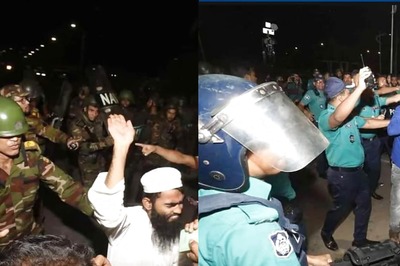
views
Due to recent ‘Samajwadi party-Bahujan Samaj Party Pact’ and its success in bypolls, a social alliance between OBCs and SCs has started to evolve. This pact is slowly moving towards a long term alliance. Even after defeat of Bahujan Samaj Party candidate in Rajya Sabha, Mayawati strongly showed her commitment towards her stand by making a public statement that BSP's relation with Samajwadi Party will not be affected. “We will keep evolving as alliance for coming 2019 election,” she said.
She also requested BSP Mandal level coordinators and its cadres to develop interaction (mel jol) with Samajwadi party leaders. In the meantime, Uttar Pradesh Chief Minister Yogi Adityanath asserted that BJP government in Uttar Pradesh will constitute a committee to give reservation to the most marginal among SCs and most backward among OBCs. It created a debate in Uttar Pradesh politics.
This move of CM has also been seen as a strategy to diminish the impact of growing SP-BSP pact. It is also observed as a masterstroke of Yogi to fracture the social alliances between OBCs and Dalits that was in the process of the making.
In fact, this kind of effort is not happening first time in the politics of Uttar Pradesh. If someone explores the history of governance politics in Uttar Pradesh, one may find that during the chief ministership of Hemavati Nandan Bahuguna, a commission called Sarvadhik Pichhada Aayog, was formed. Chedilal Sathi was nominated as president of this commission. This commission reviewed the structure of the OBC communities and suggested three layers among them. This commission also suggested for separate reservation for these three layers.
In 2001, during the regime of chief minister Rajnath Singh of Bharatiya Janata Party, another committee was formed to review the reservation processes of SC and OBC communities. This committee was named as ‘Social Justice Committee’. It was headed by Hukum Singh, a cabinet minister in the ministry of Rajnath Singh.
In its 200-page report submitted in 2001, this committee suggested to divide SCs in two layers -- group A, that may contain Jatav and Dhusia caste, and for the group B, committee suggested that all other SC castes will be clubbed in this group.
This report recommended 10 percent reservation for group A and 11 percent reservation for group B. For OBC category, it further suggested three categories -- group A would contain Yadavs and Ahirs and they may be given 5 percent of reservation, group B would contain castes like Jats, Kurmi, Lodh, Gujjars and this group may get 9 percent of reservation, and group C would contain most backward communities and 14 percent of reservation was recommended for them. This report also recommended 28 percent reservation for OBC castes.
But all these efforts failed in Uttar Pradesh because Allahabad High court stopped the implementation of these recommendations on the basis of a legal argument that quota within quota is not legally viable. But these efforts may be observed as an intervention to create multiple categories among SCs and OBCs, who used to claim themselves as homogeneous communities, although they are quite heterogeneous in nature.
It is true that a few castes among SCs have acquired capacity to aspire for better life due to various historical reasons. SCs like Jatavs and Pasees have acquired aspiration to get education and claim for government jobs earlier than other smaller Dalit castes.
Similarly, one may observe case of Yadavs, Patels and Kurmis among OBCs. These castes are numerically stronger, so are in beneficial position in democratic electoral processes. So, they have asserted for their aspirations and tried to acquire it. They also produced their community leaders, who have given voices to their desires and also provided them visibility. But there are many castes among these communities who are still invisible.
They are mostly uneducated. They don’t have their community leaders to create pressure on the state and provide them visibility in democratic electoral politics. They lack capacity to represent their voice to interact with state politics. These invisible communities have less representation in state and politics.
Benefits of state-led development project reaches to them due to trickledown effect. They have not yet acquired sufficient capacities to take proper share in reservation based protective discrimination policies. They are still knocking the door of democracy.
These invisible communities may get real benefits of these efforts when state will do proper paper home-work to support such initiatives in the court. Otherwise it will appear as only political act to create political mobilizations and to get political benefits. Politically, it will benefit BJP even it does not get real shape.
BSP and SP will certainly need to create counter discourse in the favour of their alliance as damage control. We need to see how politics and administrative processes evolve around such interventions.
(Badri Narayan is a Social Scientist at GB Pant Social Science Institute in Allahabad. Views are personal.)















Comments
0 comment